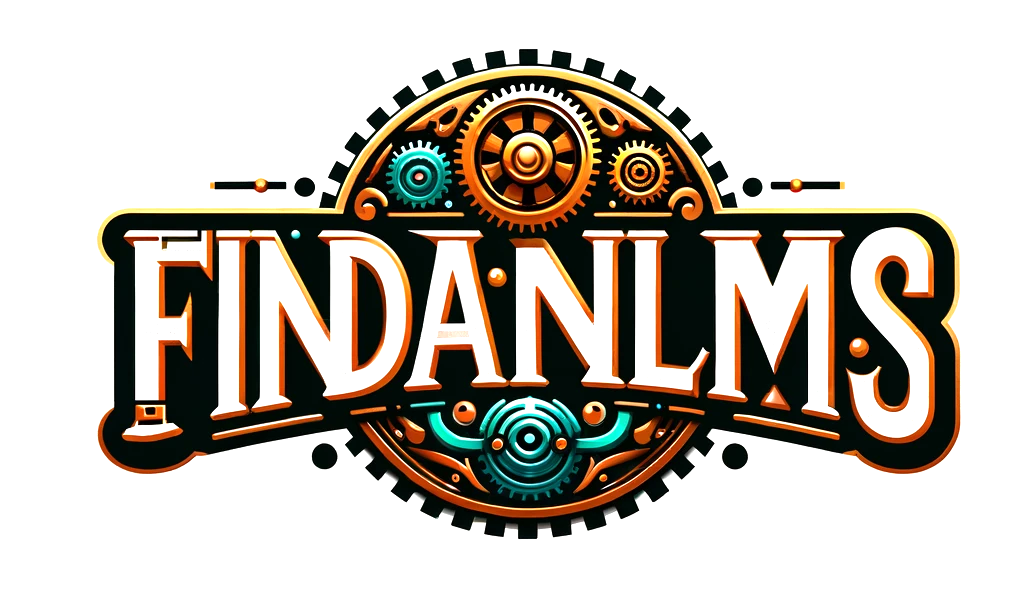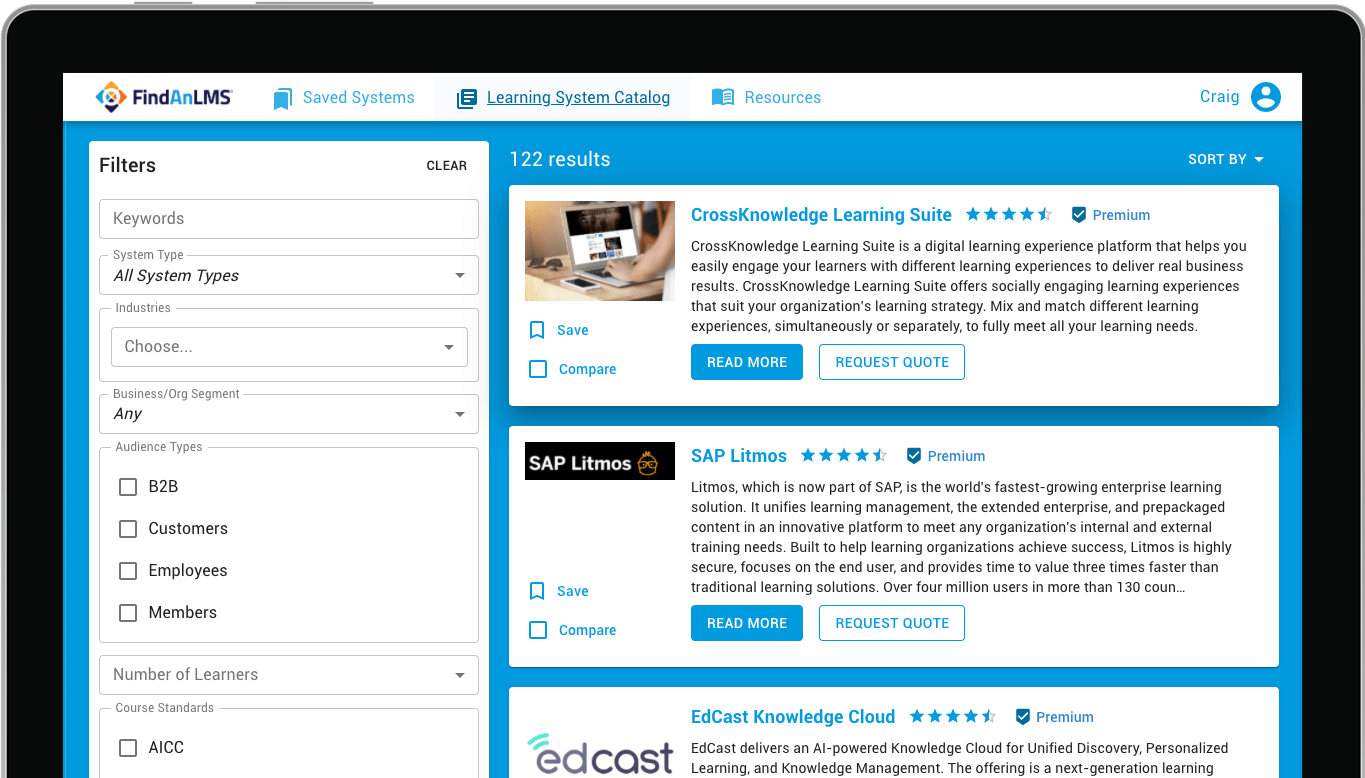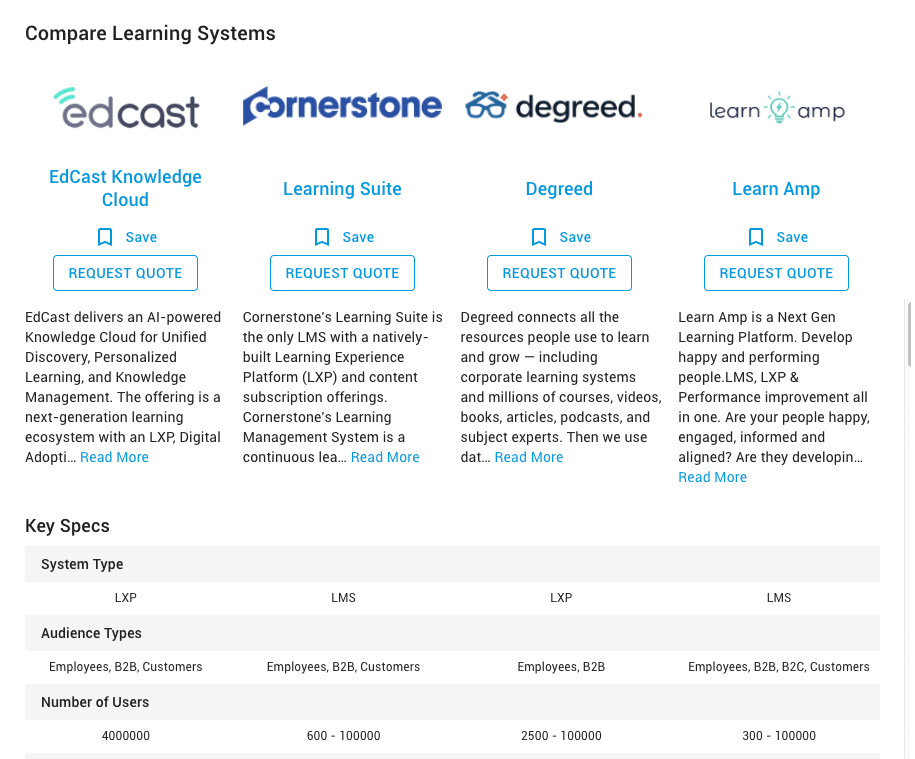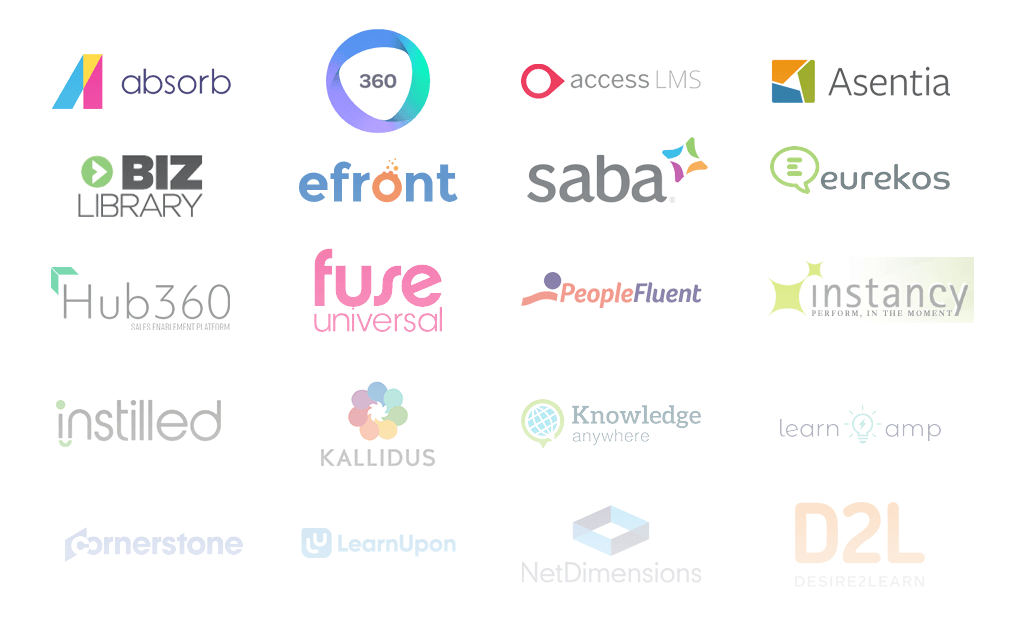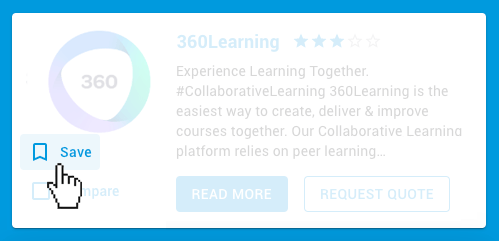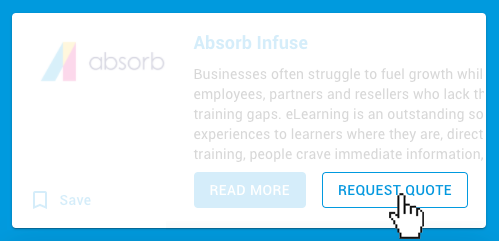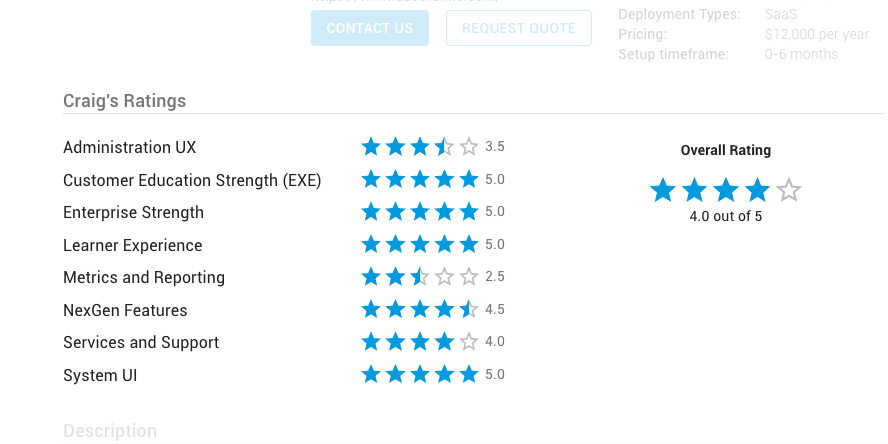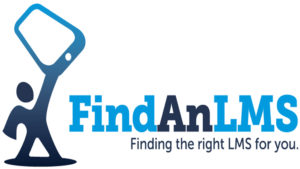If your organization is searching for an e-learning platform such as an LMS (learning management system), LXP (learning experience platform), or TDP (talent development platform), sending an understandable RFI (request for information) or RFP (request for proposal) is an essential step. These documents tell vendors precisely what you’re looking for while also allowing vendors to explain how their features align with your needs.
Unfortunately, preparing an RFI can be a headache. Some entail convoluted use cases that nobody but the author can decipher. Others suffer from having too many people work on it, leading to bloated documents with multiple redundancies. You might accidentally incorporate jargon specific to your company or false assumptions about what the vendor knows about your industry. All of these issues can compromise your search and hinder communication between you and prospective vendors.
Craig Weiss, an e-learning industry expert with firsthand knowledge of over 1,000 e-learning platforms and more than two decades of experience, is solving this problem with a Learning System RFI Template. It includes all the information you should provide, what info you don’t want to provide, and the most important questions for prospective vendors. Weiss also provides expert advice through a “Craig’s Comments” section. Better yet, the template is available in two versions: a robust version that Weiss uses in his analysis and a streamlined version that’s more accessible. Below, we’ll explore what’s included tab by tab.
Tab 2: Your Information
The template’s first tab is just a logo explaining that the document is an RFI to minimize confusion, so you don’t get to the good stuff until tab 2. Tab 2 lists all of the contact info prospective vendors need about your company including your company name and address, contact person, and preferred form of communication (e-mail, phone, etc.). Most of this is self-explanatory, but the simple reminder ensures you include everything you should. Weiss also recommends specifying which departments will oversee the system and how many learners you expect to have in the first year.
Tab 3: Use Case
How your company intends to use a learning management system dictates what features you need, so Weiss recommends attaching a separate document to your RFI spelling out your needs without any ambiguity. The Learning System RFI Template doesn’t provide much guidance on how to do this, but Weiss explains how to approach it elsewhere if you’re looking for help. This is one of the most important aspects of preparing an RFI/RFP, so take your time with it.
Tab 4: Terminology
The e-learning space is full of jargon that means different things to different people, and an effective RFP needs to clear up any confusion. In this section, Weiss defines common terms for two reasons. First, you will sound like you know what you’re talking about. Second, you’re making life easier for vendors who won’t have to perform a Google search if they’re unsure what a particular term in your RFI means. Once everyone is on the same page, it’s easier to compare vendors.
Tab 5: Craig’s Resources
In this section, Weiss provides insider info such as what questions you should ask a salesperson, what to look for in a demo, and what to expect from pricing. He strongly encourages all users to delete this information before sending the RFI to vendors since it’s designed to help you get the best deal possible, not vendors. Furthermore, Weiss advises all organizations to avoid sharing their budget with any vendor. If it should cost $300 a month but a vendor knows you’re willing to pay $500, they’ll increase the price without providing any additional services.
Tab 6: Functionality
Functionality is the template’s first monster section, and some people question whether vendors will take the time to fill it all out. The answer is yes if they’re serious about landing your business. Vendors have four options to choose from when it comes to specific features: yes (they have it today), no (they don’t have it), roadmap23 (they don’t have it yet but plan to add it in 2023), and roadmap24 (they don’t have it but plan to add in 2024). If a vendor leaves a lot of this section blank, you can safely eliminate them from your search. They won’t provide the features or support your organization needs.
Weiss also provides expert analysis of some of the ways LMS vendors mislead consumers in this section. For example, a lot of vendors heavily promote AI, or artificial intelligence, in their marketing materials. They rarely differentiate between generative AI (such as ChatGPT) and machine learning (the algorithms responsible for recommending content on sites like YouTube and Netflix) however, referring to both as “AI.”. Likewise, many vendors underreport how often their system produces hallucinations (false or made-up information) and get cagey if you ask what LLM (or large language model) their platform uses.
Weiss provides the background info and questions you need to see through misinformation and find a system with the AI capabilities you’re looking for. Some of the other topics Weiss addresses in this section include the learning environment and content creator capabilities.
Tabs 7-12: Miscellaneous
The rest of Weiss’s template focuses on specific areas such as cohort-based learning (tab 7), skills functionality (tab 8), and the level of training support available (tab 11). You may not need these features based on your organization’s use case, but having expert guidance if you do is reassuring. Weiss also recommends thinking three years out when you’re considering an e-learning platform. You won’t be able to get out of your contract once you sign it, so meeting the needs of tomorrow is arguably more important than those of today.
Get more insight from Craig Weiss with FindAnLMS.com
Whether you send your RFI to determine which vendors to schedule demos with or finalize a purchase decision, following a template created by e-learning industry veteran Craig Weiss ensures that you ask the right questions and help vendors understand your needs. However, you will still need to choose an LMS based on that information. Weiss launched FindAnLMS.com to help average people compare the top names in e-learning head-to-head based on whatever criteria they choose. You can create a free account on FindAnLMS.com right now to get started!
